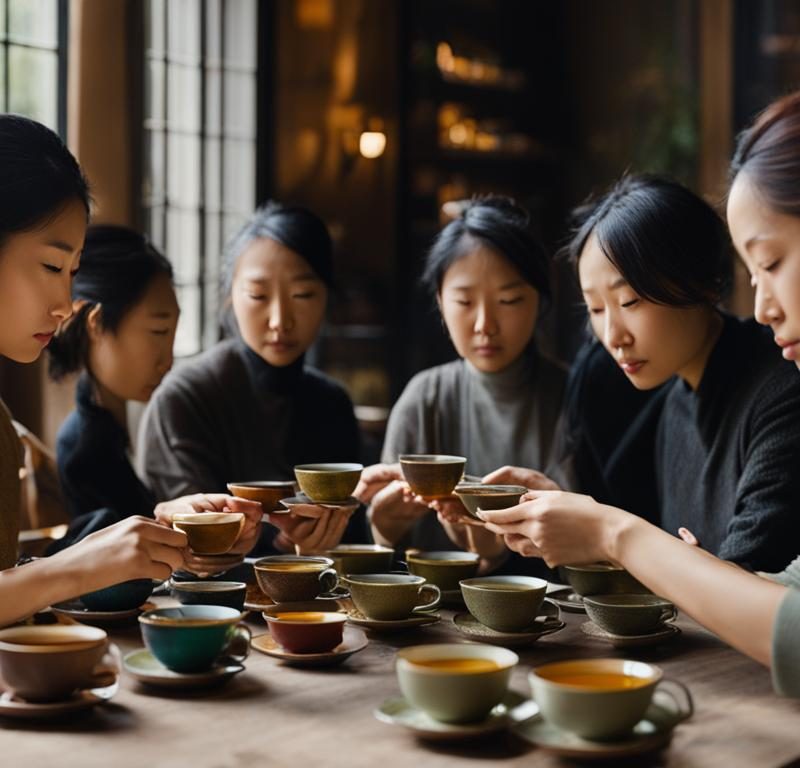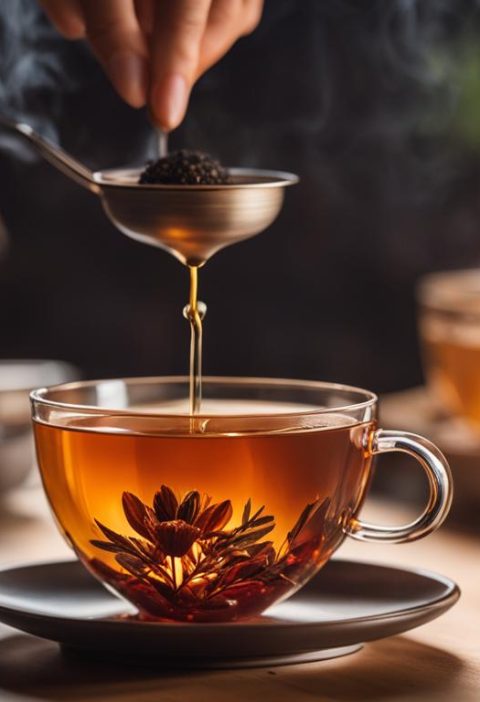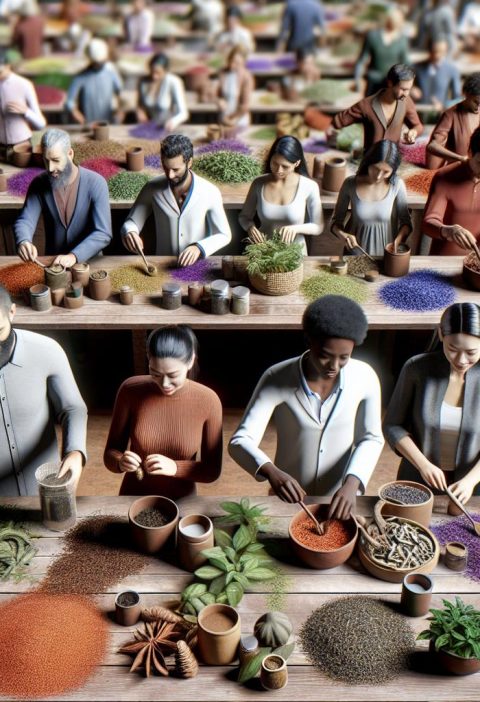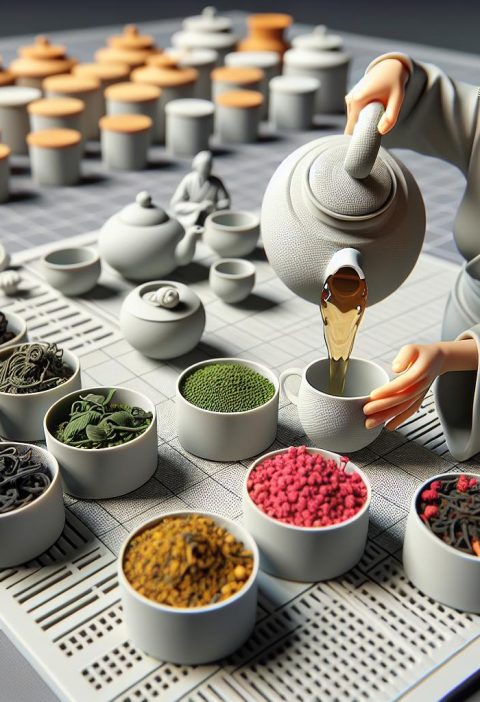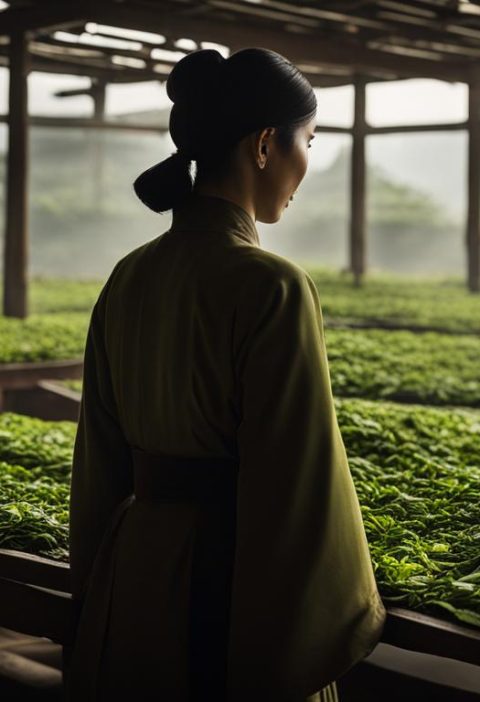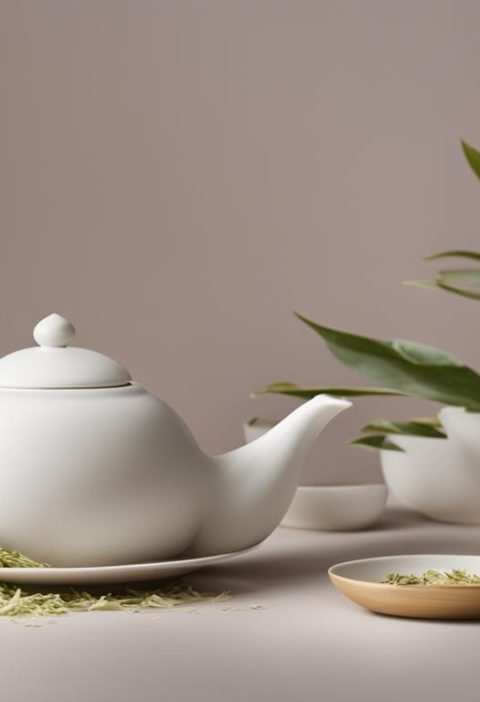Tea tasting is not just a leisurely activity; it is a skill that requires practice, training, and an encyclopedic palate memory. Those who master the art of tea tasting become experts in evaluating the aroma, flavor, appearance, and strength of different teas. Whether you are a tea professional, a tea enthusiast, or simply someone who wants to enhance their tea-drinking experience, understanding the process of tea tasting can open up a world of flavors and sensory delights. In this article, we will explore the techniques, tips, and insights needed to craft the perfect tea tasting session. From understanding tea flavor profiles and brewing techniques to pairing tea with food, we will guide you through the fascinating world of tea tasting. So, grab your favorite cup of tea and let’s embark on this sensory journey together.
**Key Takeaways:**
– Tea tasting is a skill that requires practice, training, and a discerning palate.
– The process of tea tasting involves evaluating factors like aroma, flavor, appearance, and strength.
– Tea professionals constantly refine their skills and stay updated on new teas and flavor trends.
– Tea tasting goes beyond sipping tea; it can involve the art of tea and food pairing for a delightful sensory experience.
– Brewing techniques, such as water temperature and steeping time, play a crucial role in bringing out the optimal flavors of tea.
The Importance of Tea Tasters in the Tea Industry
In the world of tea, the role of tea tasters is vital. These knowledgeable professionals are responsible for evaluating and selecting teas based on their sensory attributes, ensuring only the finest quality teas make it to the market. Tea tasters possess a remarkable ability to discern the nuances of tea through their senses of smell and taste, making them indispensable in the tea industry.
Tea tasters are not only experts in sensory evaluation but are also skilled in the art of tea blending. Using their tasting abilities, they create unique and balanced tea blends, combining different teas to achieve desired flavor profiles and characteristics.
Tea tasters collaborate closely with tea masters and buyers throughout the tea sourcing and buying process. Their expertise and recommendations are invaluable in sourcing high-quality teas that meet the standards and preferences of tea brands and consumers.
When it comes to tea auctions, tea tasters play a significant role in the evaluation and grading of teas that are listed in the auction catalogues. Their ability to assess and assign quality grades to teas ensures transparency and fairness in the auction process.
Furthermore, tea tasters contribute to the quality control of teas throughout the entire supply chain. From the tea farms to the final blended products that reach the wholesale and retail markets, they ensure that the teas meet the desired standards of aroma, flavor, appearance, and overall quality. This attention to detail guarantees that tea enthusiasts can enjoy the best possible tea experience.
In the fast-paced world of tea production, tea bags have become increasingly popular due to their convenience. Tea tasters also play a role in assessing and selecting teas specifically for tea bag usage. They ensure that the teas maintain their flavor and quality even in the compact form of a tea bag.
All in all, tea tasters are the unsung heroes of the tea industry. Their expertise in sensory evaluation, tea blending, and quality control ensures that consumers can enjoy the finest teas available. Their dedication and passion for tea elevate the experience for tea lovers around the world.
| Roles of Tea Tasters in the Tea Industry | Importance |
|---|---|
| Evaluation and selection of teas | Ensures only the highest quality teas make it to the market |
| Tea blending | Creates unique and balanced tea blends |
| Collaboration with tea masters and buyers | Provides expertise and recommendations for sourcing teas |
| Evaluation and grading of teas for auctions | Ensures transparency and fairness in the auction process |
| Quality control throughout the supply chain | Guarantees teas meet desired standards of aroma, flavor, and appearance |
| Selection of teas for tea bags | Maintains flavor and quality in a convenient form |
The Legacy of Tea Tasting and Blending
Tea tasting and blending have a rich history that has shaped the tea industry as we know it today. Tea consumption in Europe and the US was initially driven by British traders who bought teas from China. One notable tea pioneer is Sir Thomas Lipton, who began selling affordable quality tea in the 1890s. Lipton eventually established his own tea gardens in Sri Lanka to directly source teas for his brand. This fully integrated supply chain model, which Lipton pioneered over 120 years ago, revolutionized the tea industry and made quality tea accessible to the mass market. Today, Lipton is owned by Unilever, one of the largest tea packers in the world. Other major tea packers include Tata Global Beverage, Associated British Foods, and Orimi Trade. Their brands dominate the international tea market.
Sir Thomas Lipton: A Tea Pioneer
Sir Thomas Lipton was a Scottish businessman and entrepreneur who played a significant role in the tea industry. His vision of providing affordable, high-quality tea to the masses paved the way for the modern tea market. By establishing his own tea gardens in Sri Lanka (formerly known as Ceylon), Lipton aimed to create a vertically integrated supply chain. This allowed him to bypass intermediaries and ensure the freshness and quality of his teas. Lipton’s innovative approach to sourcing and distributing tea set the stage for the international success of his brand.
The Rise of Integrated Supply Chains
The integrated supply chain model introduced by Sir Thomas Lipton became a game-changer in the tea industry. By directly sourcing teas from their origins, tea brands could have better control over quality and reduce costs. This approach allowed them to offer a consistent and reliable supply of tea, catering to the growing demand from consumers worldwide. Through integrated supply chains, tea brands gained a competitive edge in the international tea market, establishing themselves as leaders in the industry.
Dominance in the International Tea Market
The success of tea pioneers like Sir Thomas Lipton and the development of integrated supply chains paved the way for major tea brands to dominate the international market. Today, these brands continue to hold significant market shares and shape the global tea industry. Unilever, the owner of Lipton Tea, stands as one of the largest players in the market. Other tea packers, such as Tata Global Beverage, Associated British Foods, and Orimi Trade, also play crucial roles in supplying teas to consumers worldwide. Their extensive tea portfolios and wide distribution networks ensure that a variety of teas are available to meet the diverse preferences of tea enthusiasts.
Tea and Macaron Pairing: A Sensory Masterclass
Tea tasting is not just about savoring the flavors of the beverage; it’s also an art that involves pairing tea with food to create a delightful and multisensory experience. One popular pairing is tea and macarons, where the flavors and aromas of both complement each other harmoniously. In this sensory masterclass, we explore the nuances of tea and the delicate flavors of macarons.
Tea professionals with an encyclopedic palate memory can identify the diverse flavor notes and profiles present in various teas. From the floral and delicate teas to the toasty and robust blends, the range of flavors in teas is vast and captivating. Green tea, in particular, has gained significant popularity due to its unique flavor profile, which sets it apart from the more common black teas.
Tea blending has also evolved to cater to different preferences and wellness needs. The trend of wellness teas has emerged, with blends incorporating herbs, spices, and exotic ingredients that offer not only a delightful taste but also added health benefits. Premium tea blends, such as single-origin blends and breakfast teas, are meticulously crafted to deliver specific taste profiles, elevating the overall tea drinking experience.
Aromas and Flavors: The Fusion of Tea and Macarons
When it comes to tea and macaron pairing, the fusion of aromas and flavors creates a sensory synergy that enhances the tasting experience. The delicate floral notes of teas like jasmine green tea perfectly complement the light and fragrant macarons. On the other hand, the deep and earthy flavors of Pu-erh tea pair beautifully with rich, chocolatey macarons. The possibilities are endless, offering a delightful exploration of taste and aroma.
Every tea and macaron combination provides a unique sensory adventure, where the flavors dance on the palate, creating a harmonious symphony of tastes. The floral and fruity notes of certain teas can accentuate the sweetness and subtle flavors of macarons, while the robust and bold teas can provide a contrast that brings out the richness of chocolaty or nutty macarons.
Bringing the Masterclass Home: Tea and Macaron Pairing Guide
If you’re eager to embark on your own tea and macaron pairing adventure, follow this guide to create a sensory experience in the comfort of your home:
- Select a variety of teas and macarons with complementary flavors.
- Take a moment to appreciate the appearance, aroma, and texture of each tea and macaron.
- Sip the tea, letting its flavors unfold on your palate.
- Take a bite of the macaron, allowing its delicate flavors and textures to mingle with the tea.
- Notice how the flavors and aromas interact and enhance each other.
- Experiment with different combinations to discover your personal favorites.
Remember, the art of tea and macaron pairing is subjective and depends on individual preferences. Allow your taste buds to guide you on this delightful journey of flavors.
Whether you’re a tea connoisseur or a macaron enthusiast, the sensory masterclass of tea and macaron pairing is an opportunity to indulge in the pleasures of taste and aroma. So, set the table, brew some tea, and savor the enchanting fusion of flavors.
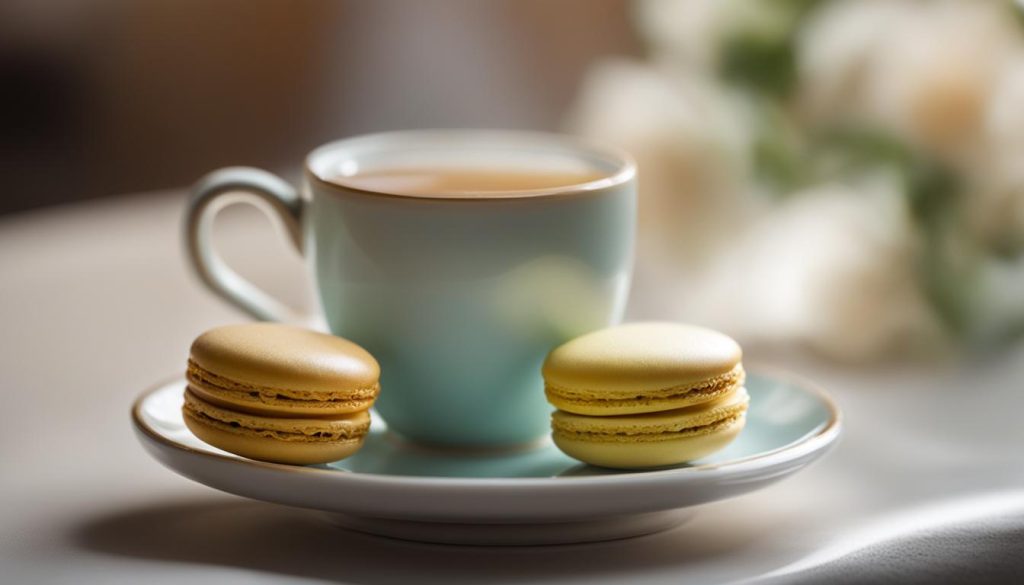
The Perfect Pairings: Tea and Macaron Combinations
| Tea Flavor | Macaron Flavor |
|---|---|
| Earl Grey | Lavender |
| Jasmine Green Tea | Mango |
| Chai | Caramel |
| Matcha | Red Bean |
The Basics of Tea Tasting: A Beginner’s Guide
Tea tasting is a wonderful way to explore the world of tea and appreciate its diverse flavors. Whether you’re a beginner or an experienced tea enthusiast, understanding the basics of tea tasting is essential to fully enjoy the tasting experience. In this section, we’ll cover the essential tools, preparation techniques, and assessment process involved in tea tasting.
Essential Tools for Tea Tasting
When it comes to tea tasting, having the right tools is crucial for a successful session. Here are some essential items you’ll need:
- Tea Tasting Mugs: Dedicated tasting mugs are designed to showcase the color and clarity of the tea, allowing you to better observe its visual characteristics.
- Tasting Spoons: These small spoons are used to sip and evaluate the tea, helping you focus on the flavors and mouthfeel.
- Tea Brewing Setup: A well-equipped tea brewing setup includes a kettle or hot water dispenser, a tea infuser or teapot, and a timer to ensure precise steeping times.
Having these tools will enhance your tea tasting experience and help you make accurate assessments of the teas you taste.
Preparing for Tea Tasting
Proper preparation is key to extracting the optimal flavors from the tea leaves. Here’s a step-by-step guide to prepare for a tea tasting session:
- Weigh the Tea Leaves: Accurately measure the appropriate amount of tea leaves for the desired strength of the tea.
- Pour the Right Amount of Water: Use the recommended water-to-tea ratio, considering the type of tea you’re tasting and the desired flavor intensity.
- Set the Steeping Time: Different teas require different steeping times. Follow the recommended steeping time for the specific tea to avoid over- or under-extraction.
By following these steps, you’ll ensure that the tea is brewed to perfection, allowing you to fully appreciate its unique flavors and characteristics.
The Tea Tasting Process
Tea tasting involves a comprehensive assessment of the appearance, aroma, and taste of the tea. As you taste each tea, make note of the following:
- Appearance: Observe the color, clarity, and consistency of the liquor to get an initial impression of the tea.
- Aroma: Inhale deeply to capture the aroma of the tea. Take note of any distinctive scents or fragrances.
- Taste: Sip the tea and let it coat your palate. Pay attention to the flavors, mouthfeel, and overall taste experience.
During the assessment, consider questions like:
- How does the liquor taste and smell?
- What are the quality and appearance of the infused leaves?
- What is your overall experience of the tea?
Professional tea tasters often spit out the liquor after each sip to avoid consuming too much tea during a tasting session.
Tea Flavor Profiles
As you explore different teas, you’ll encounter a wide range of flavors and taste profiles. From floral and fruity to earthy and nutty, the world of tea is full of delightful surprises. Keep a journal to record your observations and track the flavor profiles of the teas you taste.
Below is a sample table showcasing different flavor profiles of popular tea varieties:
| Tea Variety | Flavor Profile |
|---|---|
| Green Tea | Grassy, vegetal, fresh |
| Oolong Tea | Floral, toasty, buttery |
| Black Tea | Robust, bold, malty |
| White Tea | Delicate, subtly sweet, fruity |
By exploring different teas and their flavor profiles, you’ll develop a deeper understanding of the vast world of tea and refine your palate.
So, gather your tea tasting mugs, tasting spoons, and brewing setup, and embark on a tea tasting adventure. Discover the nuances and complexities of teas, and let your taste buds guide you through a world of flavors and aromas.
Tea-tasting Terms: The Language of Tea Evaluation
Tea tasting is an art, and like any art form, it has its own unique language. Tea professionals use a variety of terms to describe the characteristics and qualities of tea. These terms help us evaluate and communicate our observations effectively. Understanding these tea-tasting terms is essential for accurately conveying the qualities and attributes of different teas.
Liquor Evaluation
When evaluating the liquor of a tea, we consider its appearance, flavor, and body. Here are some commonly used terms:
- Autumnal: Refers to teas harvested in the autumn, which often exhibit unique flavor profiles.
- Bakey: Describes a tea with a toasty or roasted flavor.
- Body: Refers to the weight and thickness of the tea on the palate.
- Bright: Describes a tea with a vibrant and clear liquor.
- Brisk: Refers to a tea with a lively and refreshing quality.
- Burnt: Describes a tea that has been over-brewed or has a smoky flavor.
- Character: Refers to the unique personality or distinctive qualities of a tea.
Infused Leaf Evaluation
Examining the appearance and color of the infused leaves provides valuable insights into the tea. Here are some terms used to evaluate infused leaf:
- Bright: Describes leaves that have a vibrant and lively color after brewing.
- Coppery: Refers to tea leaves with a reddish-brown color.
- Dull: Describes leaves that lack luster or brightness.
- Even: Refers to leaves that have a consistent color and size.
- Mixed: Describes a combination of different leaf sizes or colors.
- Green: Refers to leaves that have a fresh and vibrant green color after brewing.
Dry Leaf Evaluation
Evaluating the appearance and quality of the dry tea leaves provides valuable information about the tea. Here are some terms used to describe dry leaf:
- Acceptable: Describes tea leaves of satisfactory quality and appearance.
- Attractive: Refers to tea leaves that are visually appealing.
- Black: Describes tea leaves that are fully oxidized, resulting in a dark color.
- Brown: Refers to tea leaves that have a brown color, typically due to partial oxidation.
- Clean: Describes tea leaves that are free from dust, dirt, or impurities.
- Milled: Refers to tea leaves that have been finely processed or ground.
Understanding and using these tea-tasting terms allows us to effectively evaluate and communicate our observations. Whether we’re describing the character of the liquor, the appearance of the infused leaf, or the quality of the dry leaf, these terms help us convey the unique qualities and attributes of each tea. So, let’s dive into the fascinating world of tea-tasting and discover the subtle nuances that make each tea experience truly special.
The World of Tea Varieties: Unraveling the Tea Tapestry
Tea is a fascinating beverage that offers a world of flavors and experiences. With its rich history and cultural significance, tea comes in a wide array of varieties, each with its own unique flavor profile. From the delicate and subtly sweet white tea to the bold and robust black tea, exploring the world of tea varieties is like embarking on a flavor adventure.
All teas come from the same plant, Camellia sinensis, but it is the cultivation, processing, and harvesting methods that differentiate them. Let’s explore some of the most popular tea varieties:
Pu-erh Tea
A fermented tea with a long history in China, Pu-erh tea offers a range of flavors. From sweet and floral to thick and earthy, this tea is known for its complexity and depth. It is often aged to enhance its unique characteristics.
Oolong Tea
Oolong tea is a versatile tea that offers a wide range of flavors. It can be buttery sweet, floral, toasty, or creamy, depending on the level of oxidation during processing. Oolong teas are highly prized for their complexity and balance.
Green Tea
Green tea is known for its fresh and grassy taste. It is lightly processed, preserving the natural flavors and health benefits of the tea leaves. Green tea has gained popularity worldwide for its refreshing taste and numerous health benefits.
White Tea
White tea is the most delicate and subtly sweet tea variety. It is made from young tea leaves and buds that undergo minimal processing. White tea offers a light and gentle flavor, often accompanied by floral or fruity notes.
Black Tea
Black tea is the most common tea variety and is known for its bold and robust flavors. It undergoes full oxidation during processing, resulting in a strong and hearty taste. Black tea is popular for its rich and malty flavor profiles.
Exploring the nuances and flavors of different tea varieties is an exciting journey. Each cup offers a unique taste experience, allowing us to appreciate the diverse range of flavors that tea has to offer.
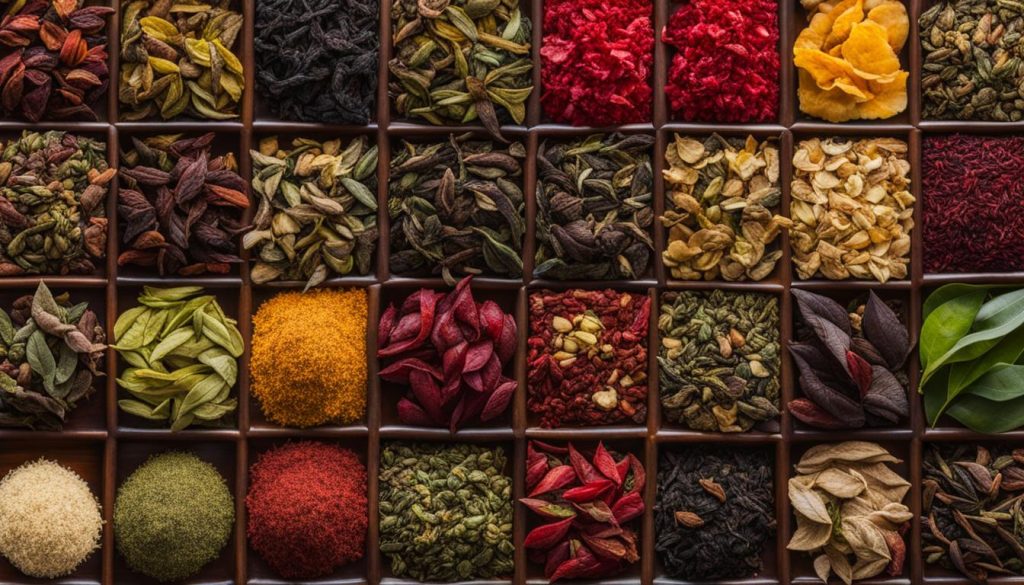
| Tea Variety | Flavor Profile |
|---|---|
| Pu-erh Tea | Sweet, floral, thick, earthy |
| Oolong Tea | Buttery sweet, floral, toasty, creamy |
| Green Tea | Fresh, grassy |
| White Tea | Delicate, subtly sweet, floral, fruity |
| Black Tea | Bold, robust, rich, malty |
The Art of Tea Tasting: Engaging the Senses
Tea tasting is a multisensory experience that engages our sight, aroma, and taste. It is through our senses that we can truly appreciate the complexities and nuances of different teas. By leveraging these sensory cues, we unlock a deeper understanding of the teas we encounter.
Observing the Tea
When embarking on a tea tasting journey, the first step is to observe the brewed tea. Notice the color and clarity of the liquor, as it can provide valuable insights into the tea’s character and quality. A clear, vibrant hue may indicate a well-crafted and fresh tea, while a cloudy appearance could be a sign of improper steeping or low-grade leaves.
Taking in the Aroma
Next, we delve into the aromatic realm of tea tasting. Bring the teacup close to your nose and take a deep inhalation, allowing the fragrant notes to envelop your senses. Notice the interplay of scents, from floral and fruity aromas to earthy and toasty undertones. The aroma of a tea can provide clues about its origin, processing method, and flavor profile.
Savoring the Taste
Now comes the moment we’ve been waiting for – tasting the tea. Take a small sip and let the tea spread across your palate, allowing the full range of flavors to unfold. Pay attention to the taste profiles that emerge – whether it’s a delicate sweetness, a robust bitterness, or an intriguing blend of flavors. Consider the texture and mouthfeel as well, noticing the weight and smoothness of the tea as it glides over your tongue.
Discovering the Aftertaste
As the tea leaves your mouth, the journey doesn’t end there. The aftertaste, or the lingering flavors that remain, provides further insights into the tea’s complexity. It is during this moment that we can truly discern the subtleties and intricacies of the tea. Notice the lingering sweetness, the evolving flavors, and the sensations that arise after the tea is consumed. The aftertaste completes the sensory experience, leaving a lasting impression.
By engaging our senses throughout the tea tasting process – from observing the color to inhaling the aroma, savoring the taste, and uncovering the aftertaste – we cultivate a deeper connection with the tea. Each sensory element adds a layer of richness to the experience, allowing us to unlock the hidden nuances and appreciate the artistry behind every cup.
Brewing Tea for Tasting: Techniques for Optimal Flavor
When it comes to tea tasting, brewing techniques play a vital role in bringing out the optimal flavors. Different teas require different water temperatures and steeping times to achieve their full potential. By mastering the art of brewing, you can fully appreciate the unique characteristics of each tea.
Brewing Green Tea
Green tea is known for its delicate flavors and vibrant color. To avoid bitterness, it’s important to brew green tea at a lower temperature for a shorter time.
| Tea Type | Water Temperature | Steeping Time |
|---|---|---|
| Green Tea | 175°F (80°C) | 1-2 minutes |
Brewing Black Tea
Black tea is robust and bold, offering strong and hearty flavors. To bring out the full-bodied taste, black tea can withstand higher temperatures and longer steeping times.
| Tea Type | Water Temperature | Steeping Time |
|---|---|---|
| Black Tea | 212°F (100°C) | 3-5 minutes |
Remember that these are general guidelines, and you can adjust the temperature and steeping time based on your personal preference. Experimenting with different brewing techniques will enable you to discover the flavors that you enjoy the most.
To ensure consistent and accurate brewing, consider using a temperature-controlled kettle or an electric tea maker with programmable settings. This will help you achieve precise water temperatures and steeping times.
With the right brewing techniques, you can unlock the full potential of each tea and experience its unique flavors and aromas. Explore and experiment with different brewing methods to find your perfect cup of tea.
Developing a Discerning Palate: Training Your Taste Buds
Developing a discerning palate for tea is key to fully appreciate its complexity and variety of flavors. It’s not about identifying obscure taste nuances, but rather about developing taste awareness and recognition for key flavor profiles. By paying attention to the sweet, bitter, fruity, floral, earthy, or nutty notes in a tea, we can train our taste buds to distinguish and appreciate the different flavors.
One effective way to develop a tea palate is by comparing different teas side by side. By doing so, we can train our taste buds to detect subtle differences in flavor, aroma, and mouthfeel. This comparative approach helps refine our palates and opens us up to the nuances of each tea.
Another useful technique is to keep a tea journal. We can use it to record our observations about the appearance, aroma, and flavors of different teas. By logging our experiences, we create a reference tool that helps us develop our flavor recognition and memory. This journaling process not only deepens our understanding of tea but also allows us to track our progress and discoveries along the way.
Building a tea palate is not an instant process; it’s a gradual journey that requires continued exploration and curiosity. As we taste and analyze different teas, our taste buds become more refined, and our ability to appreciate the complexity of flavors increases. So, let’s embrace the challenge of developing our tea palates and embark on a flavor-filled adventure!
Benefits of Developing a Discerning Palate
- Enhanced appreciation for the complexity of tea flavors
- Ability to detect and identify subtle taste nuances
- Improved ability to select and recommend teas based on personal preferences
- Deeper enjoyment and satisfaction when drinking tea
- Enhanced sensory experience during tea tasting sessions
Embracing the Tea Tasting Journey: Learning Through Experience
Becoming a tea tasting expert is not an overnight endeavor, but rather a journey of exploration and experience. The key to mastering tea tasting is to drink more tea and consciously observe the flavors and sensations with each cup.
The more teas we try, the more familiar our palate becomes with the nuances and characteristics of different teas. Each sip is an opportunity to learn and expand our tea knowledge. It’s a chance to explore new flavors, discover unique tea profiles, and deepen our appreciation for the art of tea.
The joy of tea tasting lies in the journey itself. With every cup we savor, we embark on a personal tea journey filled with flavor exploration and discovery. It’s a chance to connect with the rich heritage and cultural traditions of tea. So, let’s raise our cups, embrace the tea tasting journey, and savor every sip along the way.
